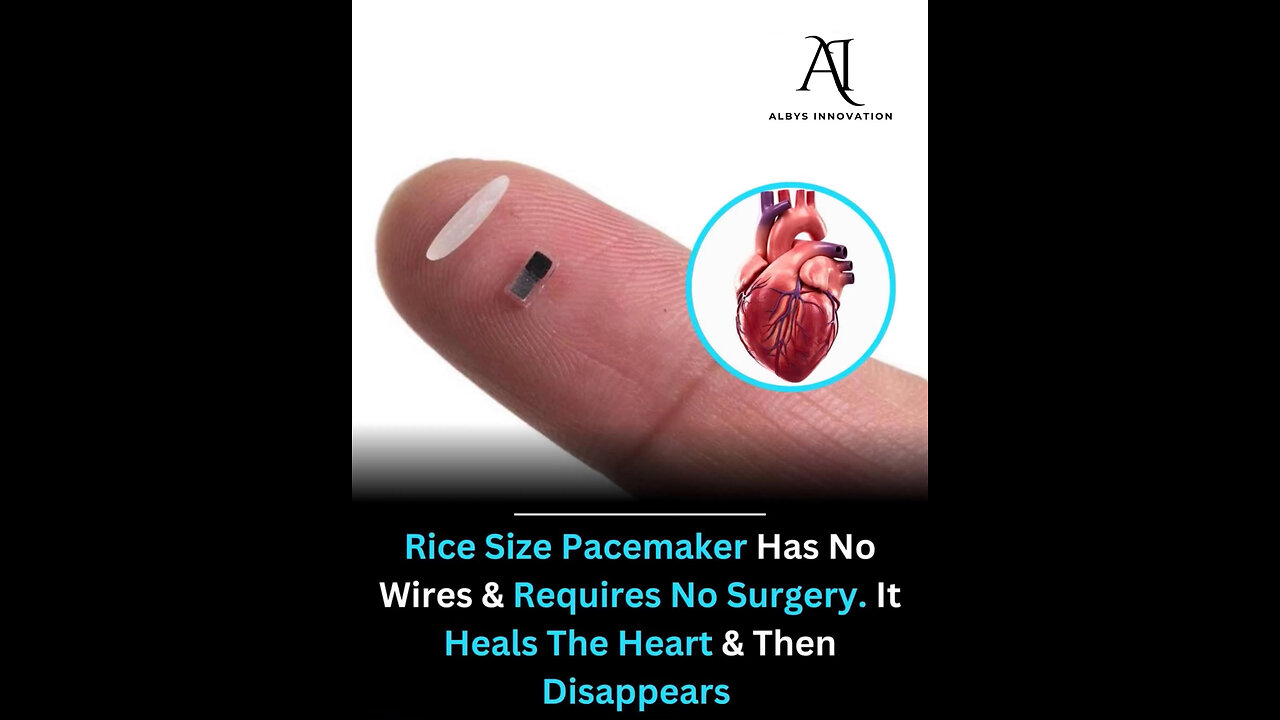Premium Only Content

Revolutionary Rice-Sized Pacemaker: No Surgery, No Wires, Just Healing #health #heart #innovation
Imagine a pacemaker so tiny it can be injected with a syringe, eliminating the need for invasive surgery. Northwestern University engineers have unveiled the world’s smallest pacemaker, measuring just 1.8mm by 3.5mm—smaller than a grain of rice.
This groundbreaking device is designed for temporary cardiac pacing, particularly benefiting newborns with congenital heart defects. Traditional pacemakers require surgical implantation and removal, posing significant risks, especially for infants. In contrast, this dissolvable pacemaker naturally absorbs into the body after its job is done, eliminating the need for extraction.
Paired with a soft, flexible, wireless wearable patch worn on the chest, the system monitors heart rhythms and emits infrared light pulses to activate the pacemaker when irregularities are detected. The infrared light penetrates safely into the body, triggering the device to deliver electrical pulses that regulate the heartbeat.
Remarkably, this pacemaker operates without a battery. It functions as a galvanic cell, generating electrical energy through a chemical reaction between two metal electrodes and the body’s biofluids acting as an electrolyte. This innovation not only reduces the device’s size but also enhances its biocompatibility.
The development was led by bioelectronics pioneer John A. Rogers and experimental cardiologist Igor Efimov. Their collaborative efforts aim to address the critical need for safe, temporary pacing in pediatric patients following heart surgery. Beyond neonatal care, this technology holds promise for treating various heart rhythm disorders, accelerating nerve and bone healing, and managing pain.
Published in the journal Nature, this study marks a significant advancement in medical technology, potentially transforming cardiac care and offering new hope for patients worldwide.
#PacemakerInnovation #HeartHealth #MedicalBreakthrough #Bioelectronics #NorthwesternUniversity #CardiacCare #InfantHealth #DissolvableTech #WearableMedicalDevices #FutureOfMedicine
-
 29:48
29:48
The White House
2 hours agoPresident Trump and The First Lady Participate in the Thanksgiving Turkey Pardoning
4.54K12 -
 LIVE
LIVE
The Charlie Kirk Show
1 hour agoMark Kelly Court Martial + AI Embargo + Thanksgiving | Davis, Federer, Newcombe | 11.25.2025
2,669 watching -
 53:20
53:20
The Rubin Report
2 hours agoLara Trump Destroys Bill Maher’s Narrative w/ Facts in 1 Minute
13.8K29 -
 LIVE
LIVE
TheAlecLaceShow
1 hour agoGuest: Rep. Tim Burchett | Ukraine Russia Peace Deal | Trump SLAMS Seditious 6 | The Alec Lace Show
46 watching -
 LIVE
LIVE
LFA TV
15 hours agoLIVE & BREAKING NEWS! | TUESDAY 11/25/25
2,883 watching -
 1:08:44
1:08:44
VINCE
5 hours agoThe Deep State Strikes Back! (Guest Host Shawn Farash) | Episode 176 - 11/25/25 VINCE
179K122 -
 2:14:00
2:14:00
Benny Johnson
3 hours agoIt's All True, The 2024 Election Was Ready To Be Rigged. The REAL Story of How Trump-Elon STOPPED It
46.3K64 -
 LIVE
LIVE
The Mel K Show
2 hours agoMORNINGS WITH MEL K - A Republic.. If You Can Keep It! 11-25-25
785 watching -
 LIVE
LIVE
The Shannon Joy Show
2 hours agoDOGE Is DEAD * Trump’s Golden Economy Implodes * LIVE Exclusive With Galileyo CEO Brett Miller
150 watching -
 52:12
52:12
Grant Stinchfield
19 hours agoFree Speech DEAD in Britain: Islamic Migrant Chaos Sparks Police Crackdown on the Law Abiding!
4.02K3